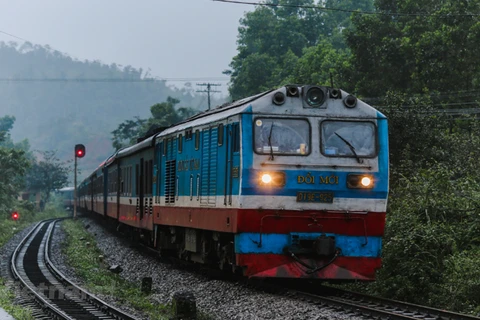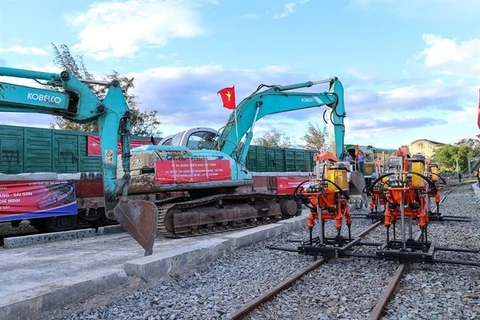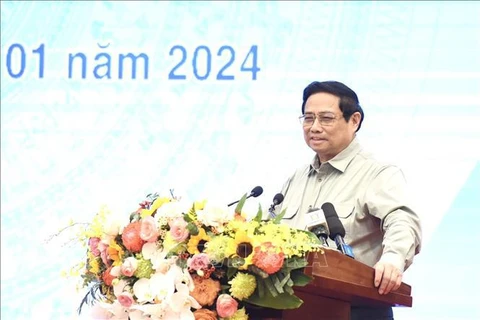 Hanoi and Ho Chi Minh City need to complete their urban railway networks within the next more than 10 years to catch up with other urban areas in Southeast Asia. (Photo: VNA)
Hanoi and Ho Chi Minh City need to complete their urban railway networks within the next more than 10 years to catch up with other urban areas in Southeast Asia. (Photo: VNA) Dang Huy Dong, Director of Hanoi’s Planning and Development Research Institute, emphasised the target of completing the urban railway networks in the two cities by 2035 in accordance with the Politburo’s Conclusion No. 49 - KL/TW, which, however, is a hard task.
To remove obstacles to these efforts, he suggested relevant agencies tailor new, specific legal frameworks for the two cities, which should be implemented through special mechanisms.
Dong proposed the National Assembly allow them to identify urban railway projects associated with the transit-oriented development (TOD) areas adjacent to stations as public investment ones; issue local and project bonds or apply other legal forms of capital mobilisation; and earmark 1 billion USD, of which half comes from the local coffer and the remainder from the central budget, to implement pilot projects under the a controlled testing mechanism (sandbox).
Besides, the two cities should be permitted to manage contractors under International Federation of Consulting Engineers (FIDIC) contracts fully to ease legal risks for state management agencies and investors and accelerate project progress; and select and issue a framework of standards and general technical regulations applicable to urban railway projects based on the most popular standards and regulations in the world, he continued.
With such specific mechanism, it would take the two cities only about 10 years to perfect their urban railway systems, Dong said.
Sanaki Shigeyuki, World Bank transport programme coordinator for Vietnam, stressed that it is time to start TOD urban railway development in Vietnam.
The bank recommended Vietnam to issue resolutions or decisions to establish institutions, identifying TOD as the basic policy orientation, and build laws, decrees and circulars on tools that facilitate TOD implementation and the exploitation of added value from land./.
VNA






















